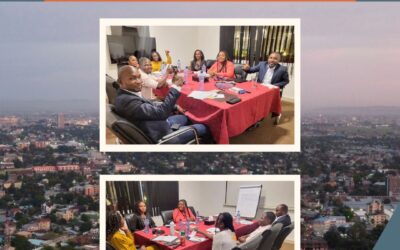This is the first in a three part series of dispatches written by Karen Stauss, the Director of Programs for Free the Slaves. Along with FTS Partnership Manager Zorba Leslie, Stauss recently returned from a fact finding trip to the DRC, where she researched the extent of slavery in the mining industry—and how to end it. Their findings were combined with research made by FTS President Kevin Bales (also accompanied by Leslie) on an earlier trip to the Congo. The results of this investigation, including FTS’s action plan, are here.
 My first day on the job with Free the Slaves was at the airport in Washington, heading to the eastern Democratic Republic of Congo (DRC). DRC had been my home for two and half years, and now I was headed back to explore the connection between slavery and “conflict minerals.” We use these minerals in so many items every day—from light bulbs, batteries and laptops to jewelry to tin cans.
My first day on the job with Free the Slaves was at the airport in Washington, heading to the eastern Democratic Republic of Congo (DRC). DRC had been my home for two and half years, and now I was headed back to explore the connection between slavery and “conflict minerals.” We use these minerals in so many items every day—from light bulbs, batteries and laptops to jewelry to tin cans.
It was fitting that my trip to DRC this summer was via Belgium and Rwanda, two countries that, in different ways and in different periods of history, contributed to Congo’s current tragedy. Belgium colonized the DRC until 1960, first under King Leopold, reaping a massive fortune from rubber, ivory, minerals and other natural resources. King Leopold was responsible for the enslavement, mutilation or killing of millions. Later, during the Congolese civil war from 1998 to 2002, which is also more accurately called Africa’s World War, Rwandan forces continued the plunder of Congo’s natural resources and abuse of civilians, along with other armies and rebel groups.
Finally arriving in Goma felt like arriving home to me, in many ways. Many things had not changed since I moved away four years ago. The weather in the Kivu provinces of eastern Congo is still perfect, like southern California. And the landscape is still breathtaking: rolling green and misty hills untarnished by the “progress” of shopping malls, industry and proper roads. (In my travels around Congo, a country the size of western Europe with a population of around 60 million, I believe I have encountered fewer than a dozen functioning traffic lights.)
Most importantly, my old friends in Congo hadn’t changed. Intrepid human rights activists abound in eastern Congo, which has always surprised me given the extreme insecurity and climate of impunity that still reign. Congo’s greatest natural resources are its people. Their courage, the resilience of their hope and their dogged will to survive are the answers to the question that my American friends often ask: how can you stand working in places like that?
Unfortunately, too many things have stayed the same in Congo. Fifty years after independence from Belgium, slavery still exists there. Two of my colleagues interviewed miners last year who described widespread debt bondage. This summer, we met miners who were forced to work on at least a weekly basis by the national army. It was pretty damning that they said conditions had actually been better when a Rwandan rebel group (the FDLR) had controlled the mine.
Many girls and women are trafficked into sex slavery in the mines—lured by traffickers who promise a living cleaning homes but ending up very vulnerable to abuse. One of my good friends in Goma told me about her cousin—still not 20—who was being used in a mine for commercial sex and now had three children. It made me wonder—who was profiting off of her exploitation?
Once someone is in slavery, it’s very difficult for them to escape. The mines are inaccessible for a few reasons. First, roads in eastern Congo range from poor to non-existent. But as importantly, a lot of people have a lot of things to hide.
Our attempt to visit a mine this summer was a case in point. We wanted to understand better the living and working conditions. After getting the go-ahead from the UN and provincial authorities to fly to an enormous but remote mine, we were prevented from traveling at the last minute by the provincial security service.
It seemed a pointless gesture, because by now we all know what they have to hide. This mine is controlled by the national army. Illegal profiteering by Congolese officials and those of neighboring countries has been well documented, and it hasn’t yet been stopped. Neither has slavery.
It doesn’t have to be this way. The Congolese people have their own solutions and strategies—you’ll be reading about them here.
The video above was shot as a part of Stauss and Leslie’s research in the DRC mining industry. It depicts a mineral processing site in a conflict/slave zone.

